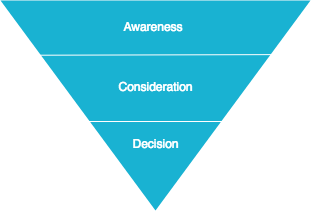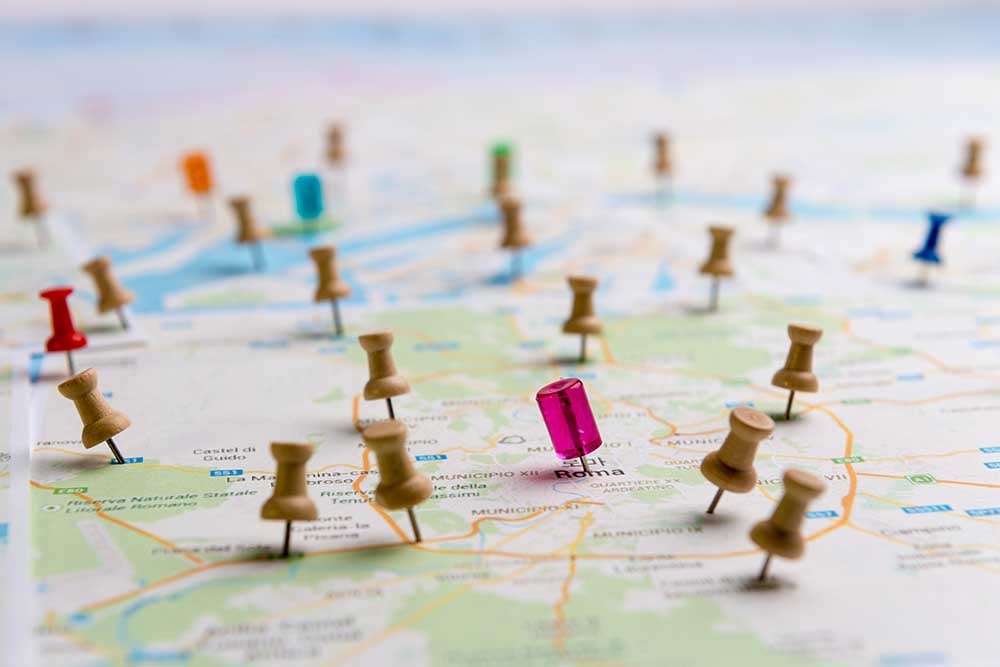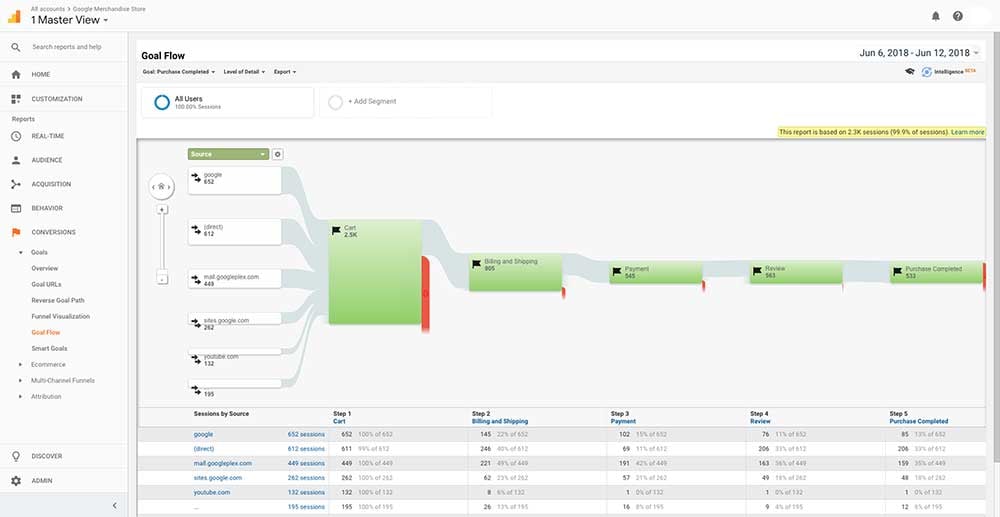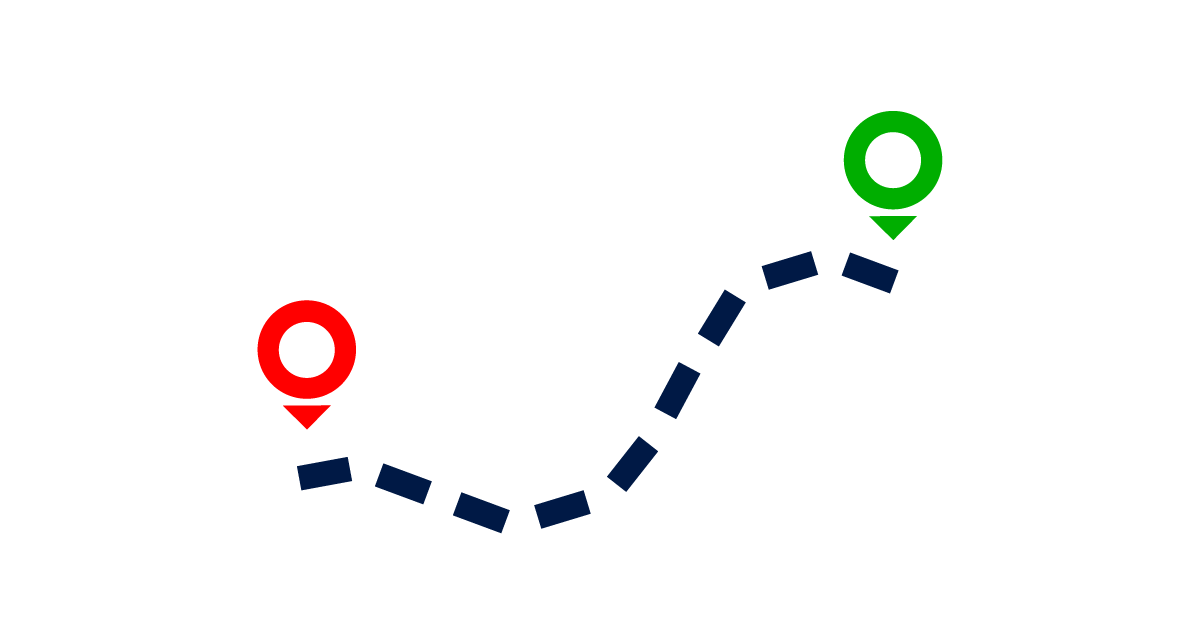If you’re a digital marketer, you've undoubtedly dabbled in content marketing. Content marketing is more than writing about your product or service. It’s a powerful and popular way to get your messaging in front of your ideal audience, build trust and relationships, and hopefully convince them to engage with your website or product.
However, content marketing can also be overwhelming. It’s possible that you’re working with a sea of content types — such as blog posts, newsletters, eBooks, case studies, white papers, and webinars — and wondering what goes where. What content is right for your organization? What will connect with your ideal audience and inspire them to become customers?
By looking at how people develop a relationship with your brand over time (commonly called the buyer’s journey), and determining what kinds of content are most helpful for people in each stage of their journey, you can anticipate what type of material you’ll need.
In this post, we’ll explore this process and deliver actionable insights that will help you create an intelligent content strategy.
What is the buyer’s journey
Knowing what types of content you should use is complicated. However, once you understand how to employ the concept of a buyer’s journey in your content strategy, you’ll substantially increase your success as a digital marketer.
The buyer’s journey is a framework that explains the steps someone goes through in discovering a problem he or she has, researching that problem, and eventually purchasing a product to solve that problem.
As can be inferred from that definition, there are three stages to the buyer’s journey: the awareness stage, the consideration stage, and the decision stage.

Awareness
In the awareness stage, the potential buyer is confronted by some problems. They’re aware of their frustration but don’t yet know precisely what’s causing it or whether it’s unique. This is typically when someone searches online for the symptoms of their problem, looking for any information they can find.
People in the awareness stage are not ready to be sold to, but they will be highly receptive to any source that helps them name and frame their problem. They are still formulating the vocabulary around the issue that will help them search for a solution.
This is a great time to make people aware of your brand. If you can provide information that helps them understand an issue they are facing, and if you can optimize that content around the search queries they’re using, you will rank highly, and visitors will take note of you.
Blog posts that articulate and describe a problem, help readers contextualize that problem and highlight a number of approaches to solving it are most likely to resonate with people in the awareness stage.
Observe how the following blog post titles focus on attracting visitors who are still trying to define and understand whatever issue they’re facing:
- 11 types of back pain and what might be causing them
- The top 5 reasons web content fails to convert visitors
- Why your CRM is so messy (and how to fix it)
These 3 titles cater to potential visitors who are experiencing frustration but have not yet nailed down exactly what’s causing it or what kind of solution to investigate. Visitors are likely to click on these titles because they promise more information that will help them clarify the question they’re facing.
Content targeting the awareness stage should aim to educate, define, contextualize, clarify, and inform. The best way to draw visitors into your funnel is with content that helps them understand their problem and prepares them for the next step: searching for a solution.
Consideration
In the consideration stage, potential buyers better understand the cause of their problem and are now researching various kinds of solutions. How and where they search depends on the information they received and the vocabulary they developed in the awareness stage, which is why that stage is so critical.
In this stage, the potential buyer is still not ready to make a purchase, but they are eager to give things a try. Content in this stage should encourage users to start free trials, request product demos, or download solution-oriented offerings like eBooks and white papers.
Want to know more about creating great white papers you can measure?
Learn more
These conversions are valuable because they allow you to showcase the benefits of your product while also gathering prospects’ contact details. The goal here is to enable potential buyers to give proper consideration to your product or service with content that demonstrates precisely how you propose to solve their problem.
Other forms of content highly suitable for this stage are:
- General FAQs
- Product brochures
- White papers and eBooks
- Explainer videos
Content targeting the consideration stage should aim to explain and even demonstrate how your product or service will effectively solve the specific problem the buyer identified in the awareness stage — and ideally get them to try it out themselves.
Decision
During the decision stage, the potential buyer has a handful of products or services they’re investigating in depth. They know more or less what they want in a solution, and they’re looking for the one that best fulfills their criteria. At the end of this stage, the buyer will likely make a purchase.
Your goal in this stage is to persuade prospects to purchase your solution rather than a competitor’s. Content for the decision stage should flaunt the merits of your solution and provide clear evidence of how it helped others who faced similar problems succeed.
Marketing Collateral ideal for the decision stage include:
- Case studies / success stories
- Instructional videos and tutorials
- Product documentation
If you offer a software solution, tutorials and documentation inspire confidence that once the potential buyer makes a purchase, they’ll have robust instructions that allow them to get started immediately. If prospects are comparing you with other similar solutions, this type of support material can play a big part in their decision.
Also consider the content on your pricing page, online store (if applicable), and automated notifications reminding them that their trial is going to expire. These are critical for the decision stage and may spell the difference between a prospect choosing you, or choosing your competitor.
Content targeting the decision phase should aim to give evidence of expected results and persuade prospects that your solution is the best choice among many.
As you can see, understanding the buyer’s journey helps you present the right type of content to potential buyers at the right time. The challenge now is to determine where each of your current assets belongs in that journey.
Learn more about the buyer's journey in our complete guide to Content Marketing.
Mapping your content
The best way to begin applying the buyer's journey and start getting strategic with your content efforts is to perform an audit of all your existing assets.

For each content asset you have — whether a blog post, case study, web page, video, eBook, or something else — you should determine where in the buyer's journey it belongs and how effective it is in moving prospects further through your funnel. This allows you to do 2 things:
- Identify content gaps in your funnel
- Optimize content according to where it belongs
The goal of a content audit is to get a complete picture of what content you currently have running, its performance, what pieces are planned for the next several months, and their projected performance.
If this is beginning to sound like lots of work, that’s because it is! Effective content marketing is no walk in the park, but it pays off.
Identifying gaps with a content audit
Create a spreadsheet that includes every piece of content your organization has created and is currently planned for the future. The spreadsheet should have columns for its status (published or planned), its type, its title, the stage of the buyer’s journey it targets, the persona it targets (keep your eyes peeled for a future post from us on personas), and the URL.
Merely filling out this sheet will give you a great idea of where content might be lacking. You might notice, for example, that the majority of your content addresses the decision stage and that you have very little geared towards awareness. Or perhaps your awareness stage is well-covered but you lack in consideration stage content.
Identifying gaps helps you plan for the future. Focus your content creation efforts on filling these gaps and ensure that every buyer's stage / persona combination is well covered with quality content.
Establishing goals for your content
The point of mapping content to your buyer's journey is to be more effective in drawing visitors through your funnel by presenting them with the content they need to take the next step towards a purchase.
So, after determining where in the buyer's journey each piece of content belongs, you need to check whether those assets are really doing their job.
- Is your awareness stage content helping people define their problems?
- Do your consideration assets showcase the merits of your solution?
- Are your decision pieces persuading prospects that your offer is better than those of your competitors?
Before you can answer these questions, you need to decide on some measurable goals. Goals allow you to gauge the effectiveness of each piece of content and then optimize them accordingly.

The goals you set for each piece of content depend on both the buyer's stage they belong to and the type of content. Only once you've determined a goal for each asset can you assess its effectiveness and begin to optimize it.
Here are 6 content goals we use at Foleon (though yours may differ):
- Acquisition: To attract new visitors
- Activation: To turn visitors into subscribers (micro-conversion)
- Education: To engage subscribers and keep them coming back
- Revenue: To persuade visitors to make a purchase (macro-conversion)
- Expansion: To encourage customers to upgrade
- Referral: To delight customers and turn them into evangelists
As you can see, the goals don't always have a 1-to-1 relationship with the journey stages. While acquisition and activation are most associated with the awareness stage, activation could also fall neatly into the consideration stage, depending on the context.
What's important here is that assigning goals to content gives you the ability to measure their effectiveness and optimize them.
Optimizing for the journey stages
Now that you've placed each asset in the buyer's journey and assigned them tangible goals, you can decide what metrics are most appropriate to measure.
Make a second spreadsheet, similar to the first one, that includes every piece of content you have, as well as the ones you’re planning. The spreadsheet should have a column for the title so you can relate it to the first one.
Additional columns should include each piece's goal, the number of views, time spent on a page divided by word count, bounce rate, traffic source, conversion rate, and possibly more. Only use the columns that apply to a given piece of content and add columns for more metrics as necessary.

For an awareness phase blog post that offers a downloadable eBook, for example, you would likely be interested in the number of unique users the post acquired, scroll depth, and the conversion rate. For the eBook itself, the number of activated visitors who later returned to your website and viewed your pricing page might be of particular interest.
Case studies are an example of another content type, with different metrics. The conversion you’re looking to drive with case studies is likely a purchase.
Tracking these metrics will show you whether each piece is contributing to its goal and where you have room for improvement. It's a bit of an art, and it takes practice. But eventually, you’ll get a clear picture of the boundaries between each stage of the buyer’s journey and which types of content are effective in moving prospects further.
Filling your funnel
As you fill in your content gaps and optimize assets according to their place in your funnel, you’ll begin to develop a content ecosystem with pieces appropriate for all of your needs. As different prospects move through your buyer’s journey, you’ll always have a good piece of content there to nudge them along.
In this way, you’ll be able to help prospects along the entire journey, from beginning to end. The more robust this ecosystem becomes, the better your conversion rate will become. In turn, this will give you better insights into your buyer’s journey and enable you to create even better content.
This is how marketers sustainably fill their funnel, and this process is what makes content marketing effective.


.png?width=527&name=Overcome-Content-Creation-Barriers%20(1).png)
